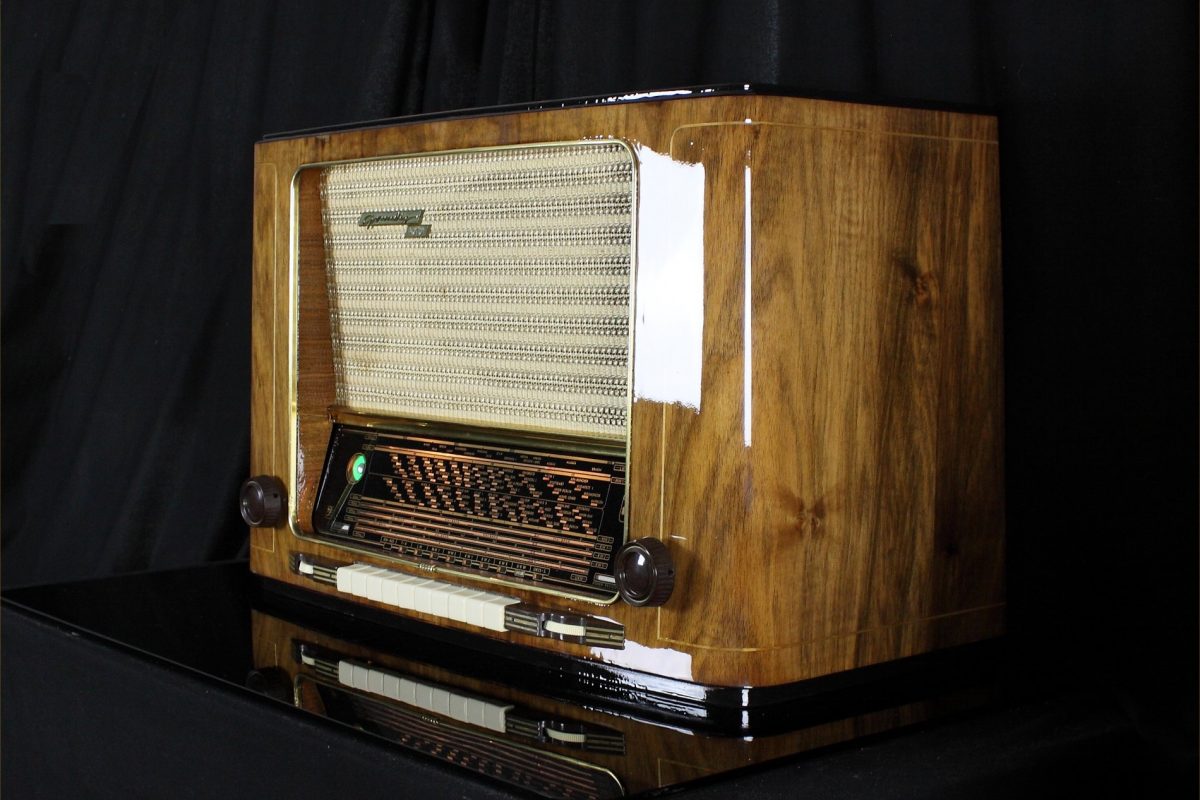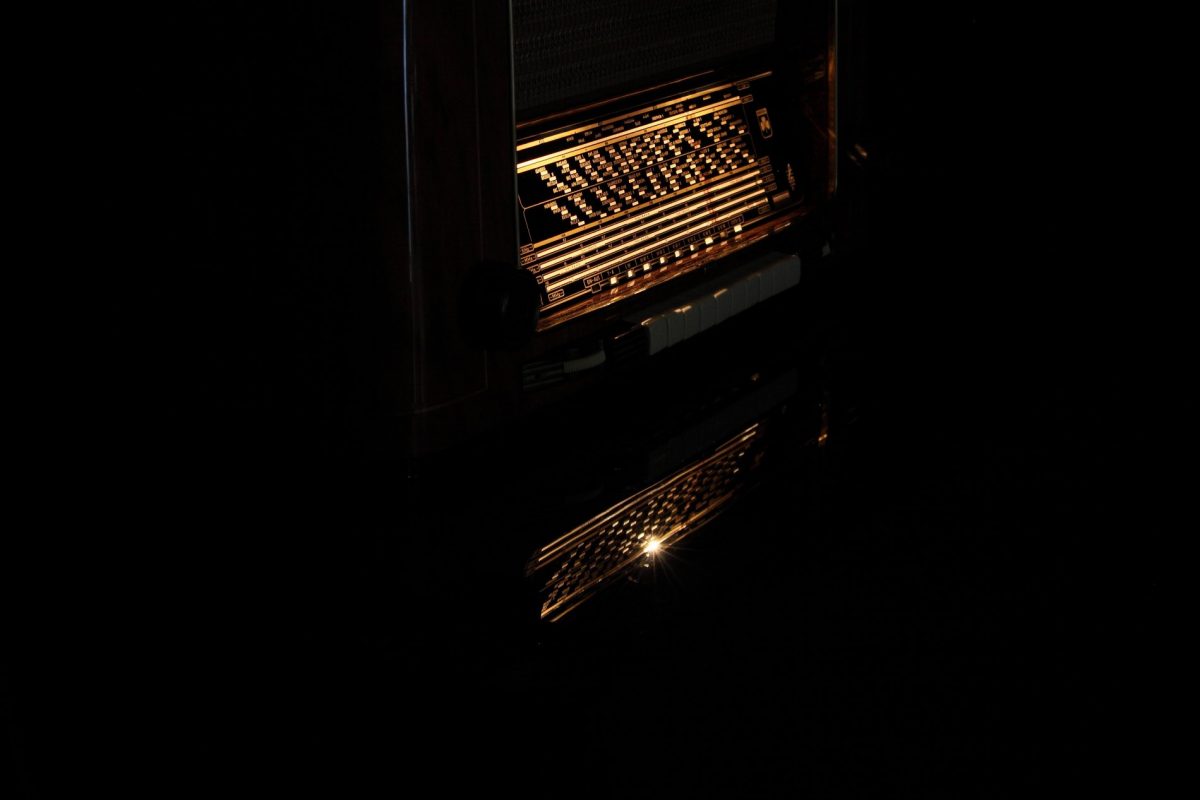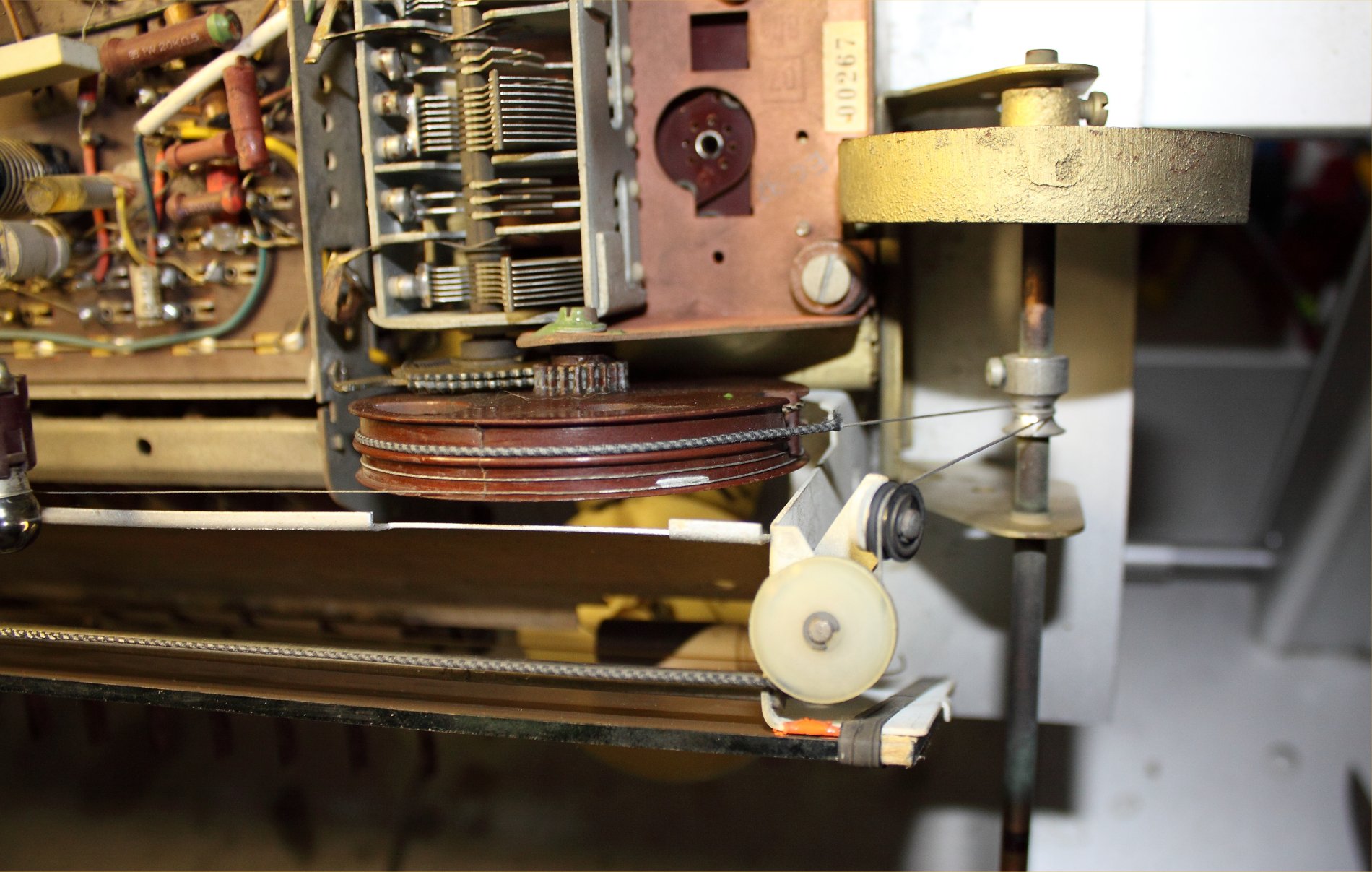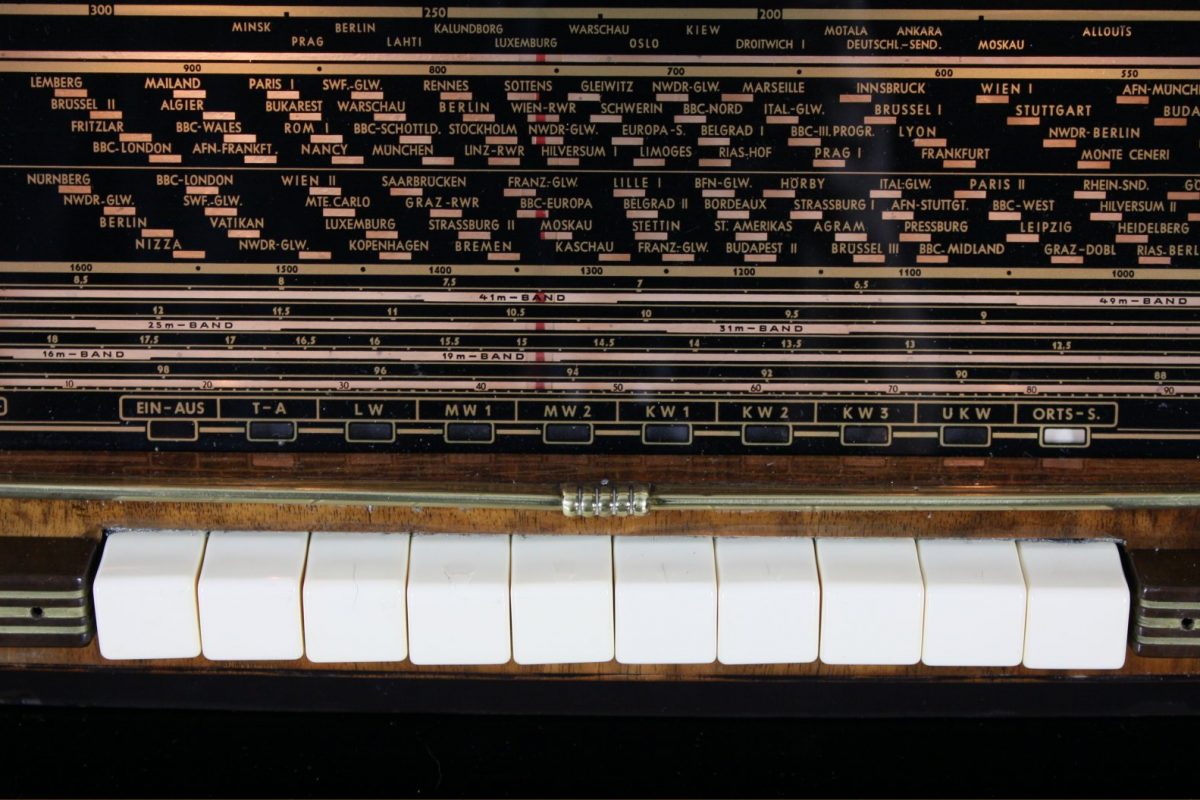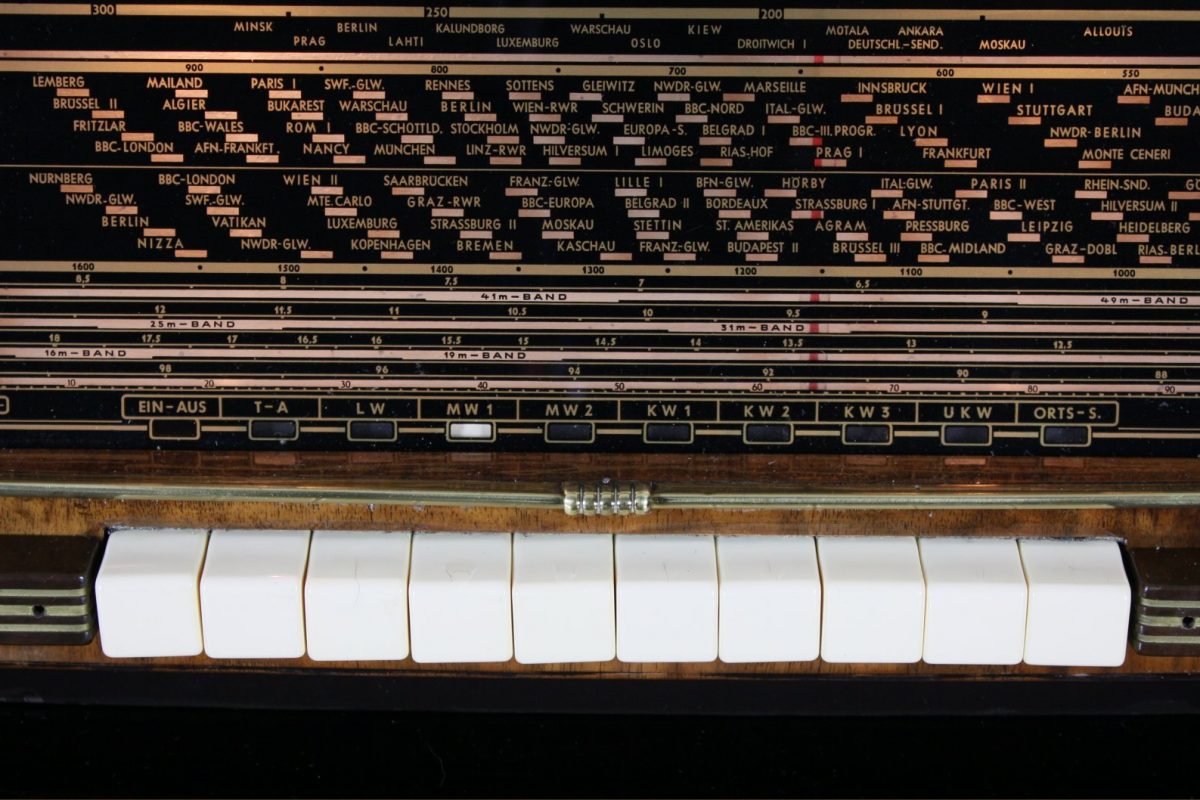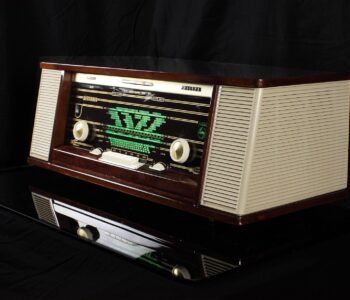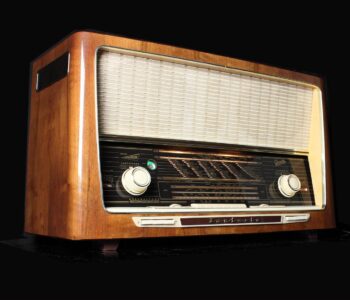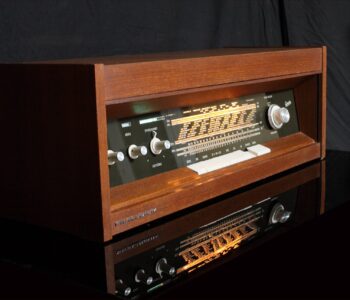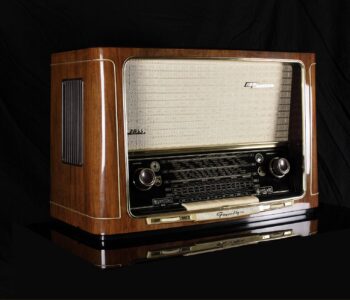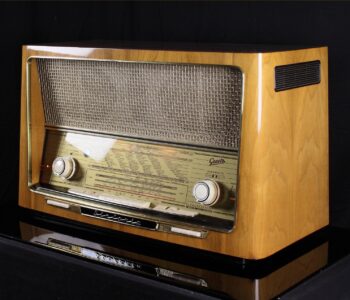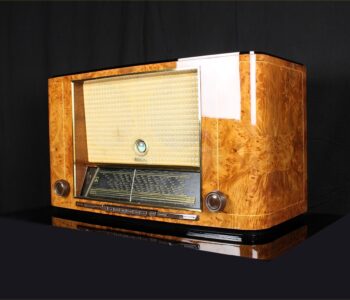 4010 - en
4010 - en
Grundig 4010W – en
- by giovanni
Grundig 4010W
GRUNDIG 4010W
Produced in 1952 and 1953, the Grundig 4010W was one of the high quality models of the manufacturer, and, of course, of the entire German production.
VIntage Radio Cabinet
Let’s start by describing the cabinet.
The dimensions are obviously important. The device does not want to pass by unnoticed. The wood veining is deliberately pronounced.
The furniture is enriched by further refinement, to clear lines that slim down the sides and the front are not drawn. These are authentic inlays of light wood.
Today, it is inconceivable to do such a thing, both for cost and for mastery.
In Grundig 40101W the band of the Short Waves is divided into three autonomous sections:
SW1 - 50,8 to 35 mt (5,9 - 8,6 MHz)
SW2 - 35 to 24 mt (8,6 - 12,5 MHz)
SW3 - 24 to 16,7 mt (12,5 - 18 MHz)
In this way, the tuning on the bands is very accurate because each band has the entire extension of all the musical scale.
In the devices produced in the following years, the Band of the Short Waves were compressed into a single musical scale.
The Medium Waves are also divided into three sections:
MW1 - 585 to 318 mt (515 - 945 kHz)
MW2 - 321 to 185 mt (935 - 1620 kHz)
Moreover, the memorization of one Medium Wave station is planned. Pressing the ORT-S button, the head of a threaded plank appears, allows the button to be rotated and tune into a favourite station.
Each time that you press the ORT-S button, the radio will tune in to the memorized station.
The FM Band ranges from 87.5 to 100 MHz. The installation of Bluetooth is highly recommended on this radio.
The amplifier section consists in a classic EABC80 tube as a preamplifier. It is equipped from controls of the high and low tones.
The output stage is a powerful EL12 polarized to operate in A-Class.
It is provided with a negative feedback system, elaborated for linearize the response in the frequency of the output stage.
However, the circuit does not introduce a high feedback factor, so the sound remains very natural.
The output transformer is well dimensioned, so it is impossible to have saturation effects.
The result of all these expensive technical solutions allows a high quality of the sound.
This was another excellent realization of the Grundig engineers.
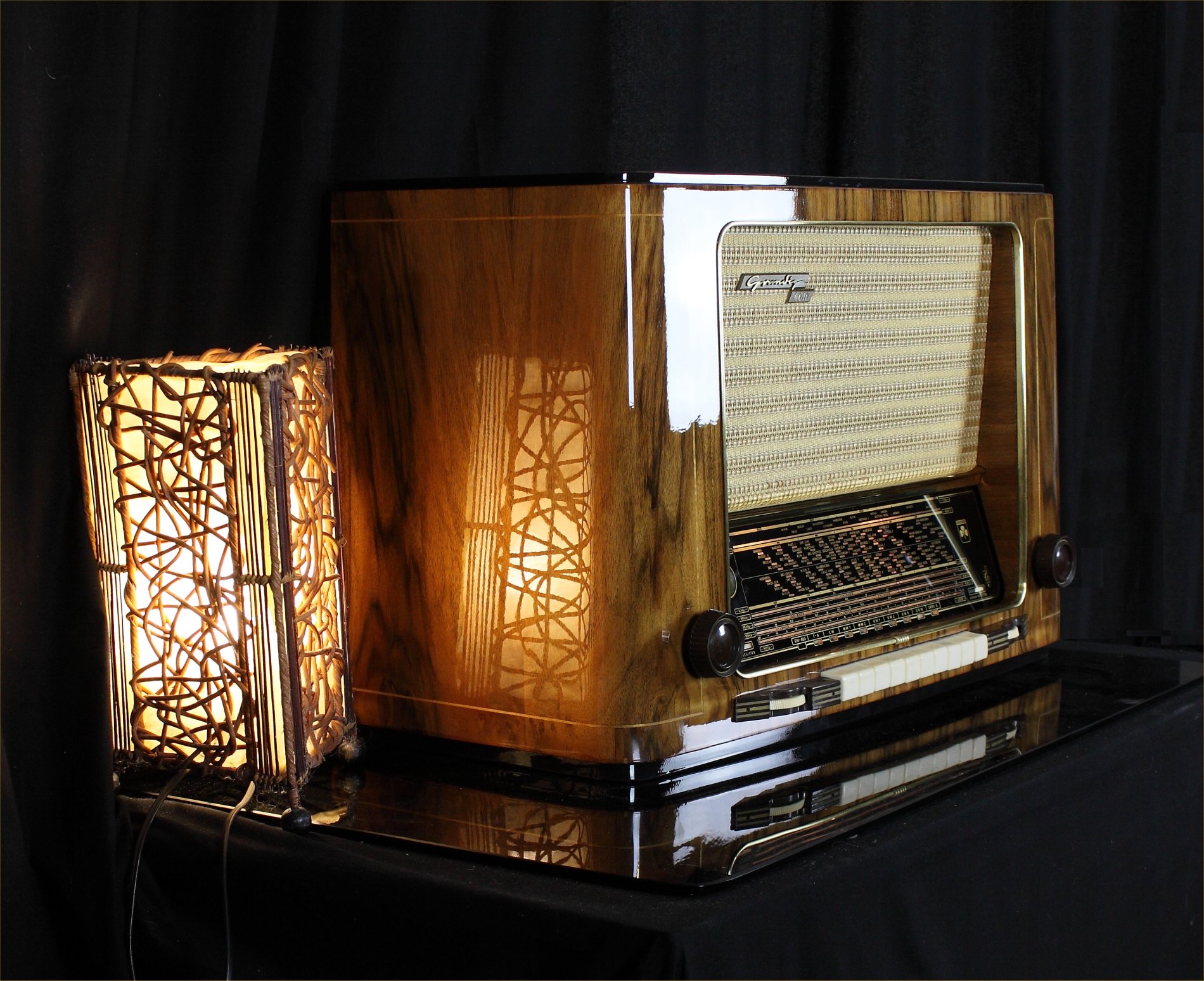
-
BLUETOOTH
Bluetooth receiver embed
-
MULTI PLATFORM CONNECTION
Each radio is equipped with a cable for connection to any digital device.
TUBESOUND IMPROVEMENT
- Bluetooth receiver embed - The unit is equipped with a BLUETOOTH receiver powered directly by the receiver power supply. This makes it possible to control the amplifier from any external digital device as an IPAD, a Smartphone, or a sophisticated multimedia station. So you can hear your preferred web station or your lossesless file without cables on the room. Wireless Receiver can be equipped upon requests.
- Multi Platform Connection - A customized adaptation cable to connect any digital device as Iphone, Smartphone, Laptop, CD Player etc. will be provided with this radio. This special cable suits the different impedances between the modern equipment and the receiver. Furthermore the two stereo channels flow into one without increasing the load to the input unit.
HISTORY
1930 - At 22 years old Max Grundig begin a radio repair business.
1939 - The II world War start. Grundig works primarily for the Wehrmacht and repair of telecommunication equipment.
1945 - Immediately after the war, the demand for repair work was very great. Max Grundig built the first two Grundig appliances: the Tubatest tube tester and the Novatest testing device.
1947 - Start the sale of a kit radio, the Heinzelmann. The unit is the basis of success, sold more than 15,000 pieces.
1950 - Very high frequency (VHF) is introduced to Germany and places new demands on the industry. Grundig launches the 380 W on the market.
1952 - The first television channel starts up in Germany. After intensive research, Grundig launches the FS 080 onto the market. In the same year the first portable tape recorder Reporter 500 L is created.
1956 - After a lot of radio produced with progrssively high performances was produced the Concert Radio 5080 equipped with an equaliser, which has five controls and a visual display.
1965 - A new factory is established in Braga, Portugal. The Satellit 205 is one of many appliances in the Satellit series. This product marks the beginning of Grundig production of high-quality global receivers.
1970 - The Audiorama 7000 Hi-fi was produced, it has twelve dynamic speaker systems in one speaker.
1976 - The Reel Tape Recorder TS 1000 is equipped for semi-professional use.
1980 - The slim-line Hi-fi Tuner ST 6000 and the Monolith Hi-fi Dynamic Flat Top Antenna, which has 22 speaker systems, are two particularly popular appliances in the new hi-fi range.
1984 - After severe drop in sales Philips increased its stake in Grundig 31.6 percent and takes over the corporate management.
1997 - Philips pulls out of its involvement with Grundig.
2003 - The company files for bankruptcy.
2008 - Turkey's Koç Holding took full ownership of Grundig Multimedia B.V., the parent company of Grundig Intermedia GmbH in Nuremberg.
Courtesy of: Grundig
MAIN FEATURES
Year of production: 1952/53
Superheterodyne IF 468/10700
9 AM circuits
10 FM circuits
Wavebands: Onde Medie (OM1, OM2), Onde Lunghe (OL), Onde Corte (OC1-OC2-OC3), FM (UKW), OM (Memory)
Loudspeakers:
1 elliptical wideband
1 elliptical Mid/Tweeter
Dimensions (LHD): 660 x 414 x 295 mm / 26 x 16.3 x 11.6 inch
Net weight: 16.7 kg / 36 lb 12.5 oz
8 tubes:
EF80 EC92 EF41 ECH81 EM34 EAF42 EABC80 EL12

TONE CONTROL WITH LEVEL INDICATION
The tones control system is very efficient. Above the large tone control knobs there is a band that lights up gradually indicating the emphasis on the band on which it acts.
Interesting the high-tone control knob linked to two thin ropes. One of them is for the position indicator of the control itself, whereas the other changes the position of the ferrite in the MF transformers modifying the inclination of the transformer’s curve.
By doing so high tones were attenuated/accentuated even before getting to the BF stage. Tone control was usually put into effect with the potentiometer on the voltage amplifier stage
AERIALS
Inside the cabinet there is a dipole for FM reception.
One arm of the dipole is also used for receiving AM bands.
Listening FM band the reception sensitivity with internal aerials is very good.
For AM bands using an external antenna the sensitivity is good.
The picture shows the dipole fixed internally to the cabinet.
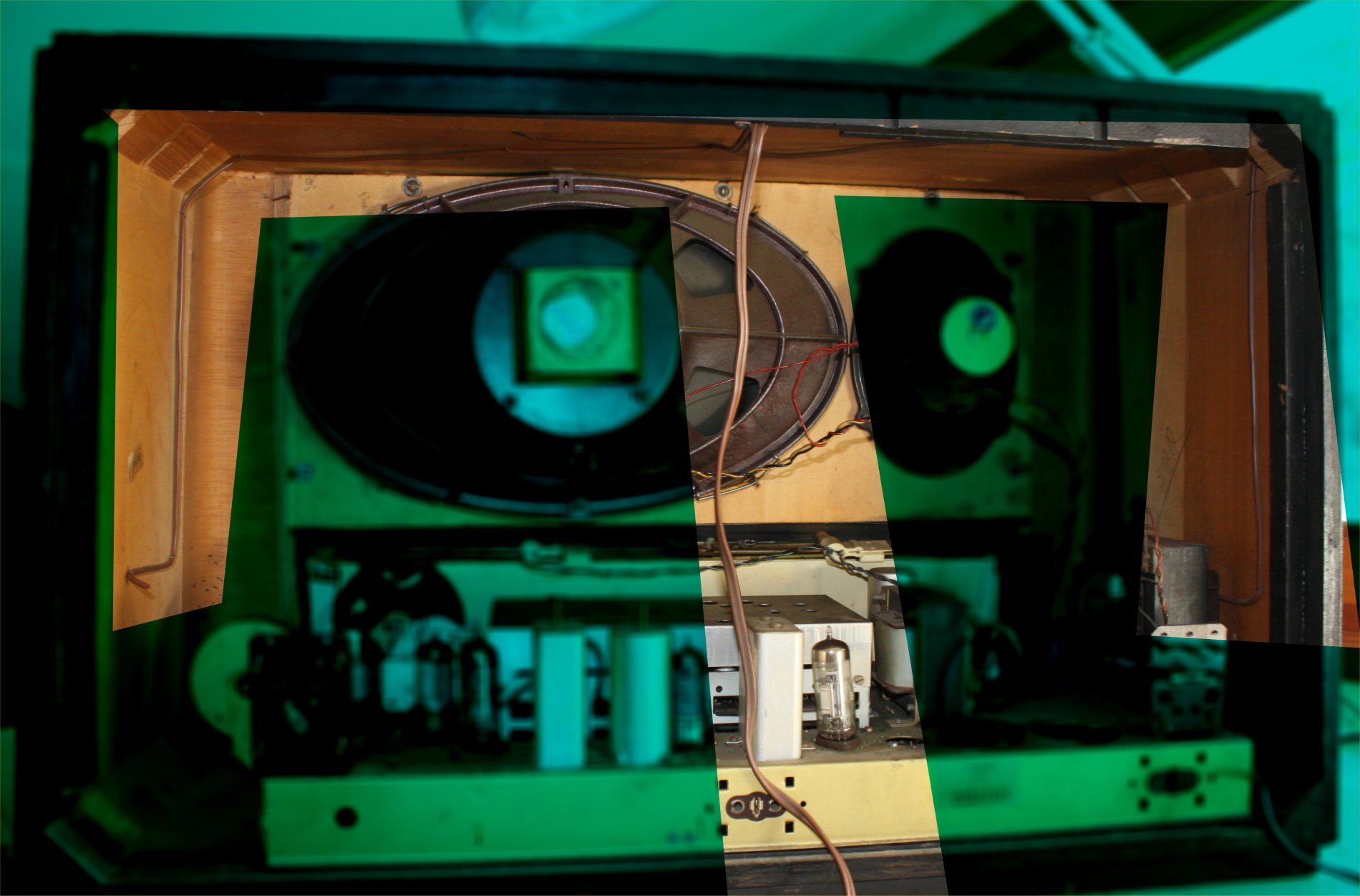
TUNING CONTROL
For both AM and FM bands the tuning system is unique.
The single variable capacitor is divided into 4 sections, two for AM and two for FM.
Each section is used respectively for the RF amplifier and the oscillator.
The mechanism is very simple and robust. It has the disadvantage of being a unique command for all bands.
TUNING INDICATOR
The magic eye has of course been replaced.

BAND INDICATOR
With this beautiful type of keyboard, called "piano", you cannot understand which band key is pressed and which band is being listened to.
For this reason, each button has an indicator that changes color when the relative key is selected.
LOUDSPEAKERS
There are two loudspeakers.
This couple of loudspeakers are very oversized.
In fact, it is the same couple used in the 5010 models, that assembles two EL12 by push-pull mode.
The main wide band measures 13.8 in of width for 7.9 in of height. It covers a part of the radio’s width ..... that is so big.
Grundig produce both loudspeakers.
A very interesting feature is that they are equipped with an adjustable basket.
This allows me to centre the cone movement with respect to the magnetic system.
The mid-tweeter has an oversized magnet. It has to tolerate considerable power peaks because it is cut very low.
The acute are unexpectedly crystalline whilst remaining very sweet.
The cones are cellulose treated and they are to this day in perfect condition, without any deformation or structural failure.
Objects built when they had to last “at least” the life time of the owner.
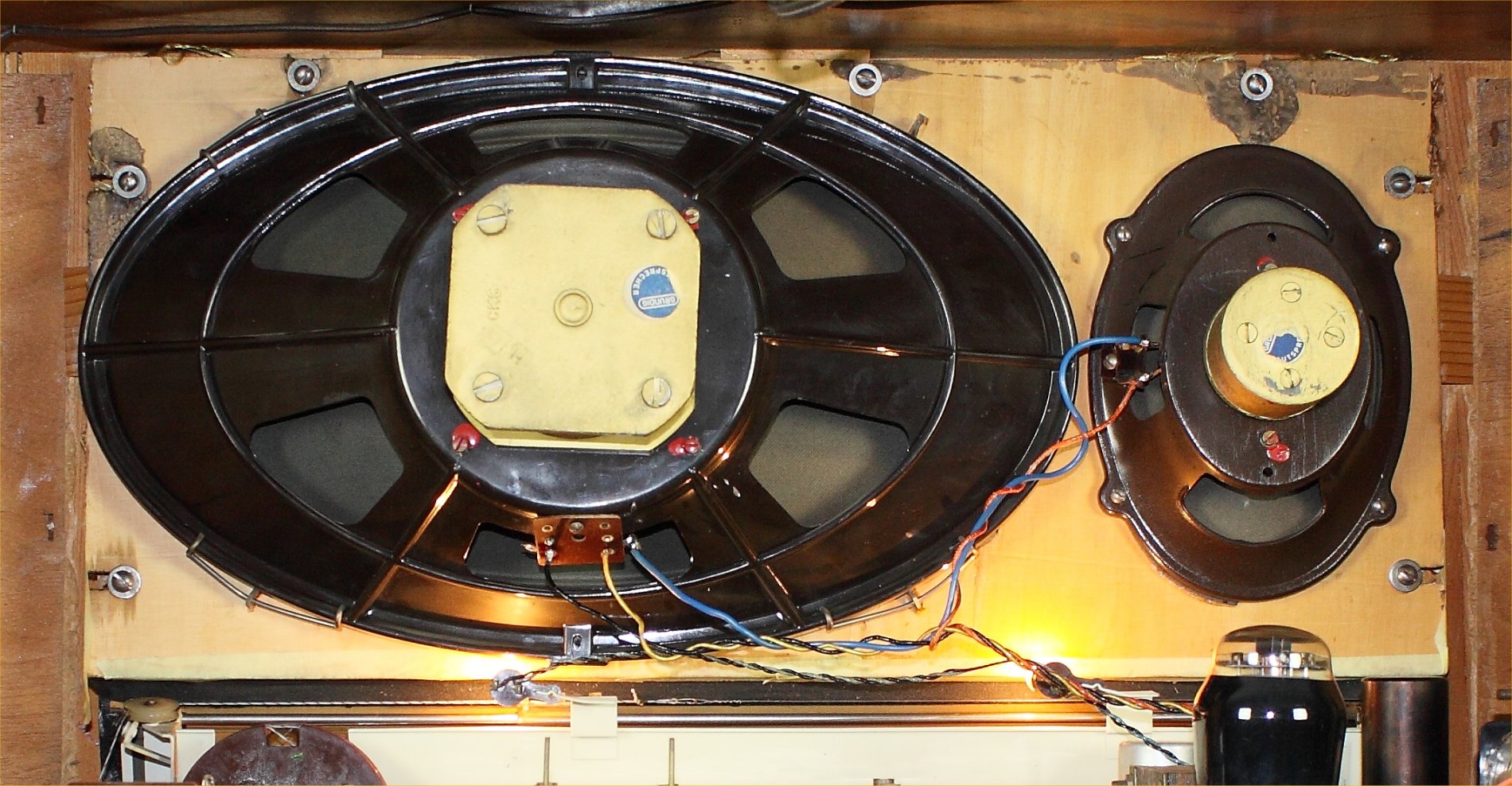
CONTROL PANEL
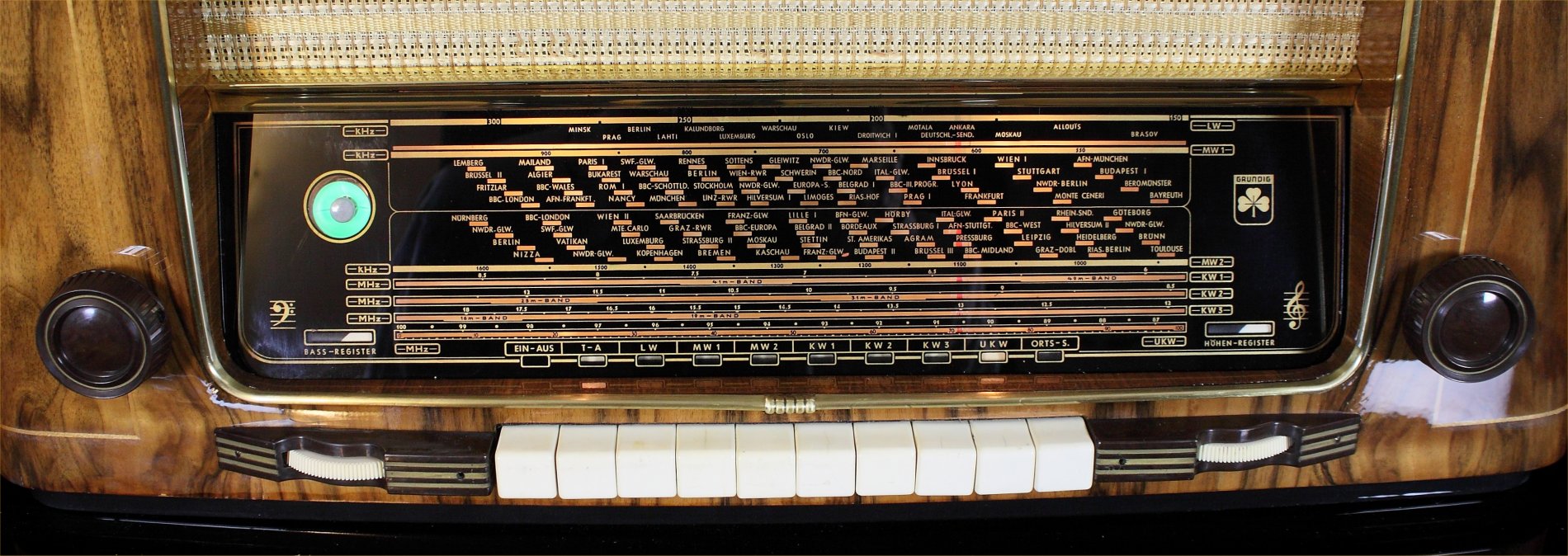
On the left you can find the volume control (with incorporated loudness).
Going to the right we find the tuning indicator, it reveal the perfect tuning of each station.
Below there are the bass knob.
By standing on the dialglass we see the Long Waves, the Two Mid Waves, the three Short Waves and the FM band.
The AM scale for Short, Medium, Long waves, and FM.
Finally, you see the treble indicator.
The tuning knob still remains to the extreme right side.
Below the dialglass we find the Bass control:
Then we see the keyboard whose keys have the following purpose respectively:
Power On / Off
Aux, LW, MW1, MW2
SW1, SW2, SW3, FM, MW (stored station)
Finally there is the knob of Treble control.

REAR SIDE
Output for external speakers.
Socket for recorder (tonbandgerat).
Turntable input (Tonabnehmer)
AM and FM aerial inputs and ground socket.
RESTORING WORKS
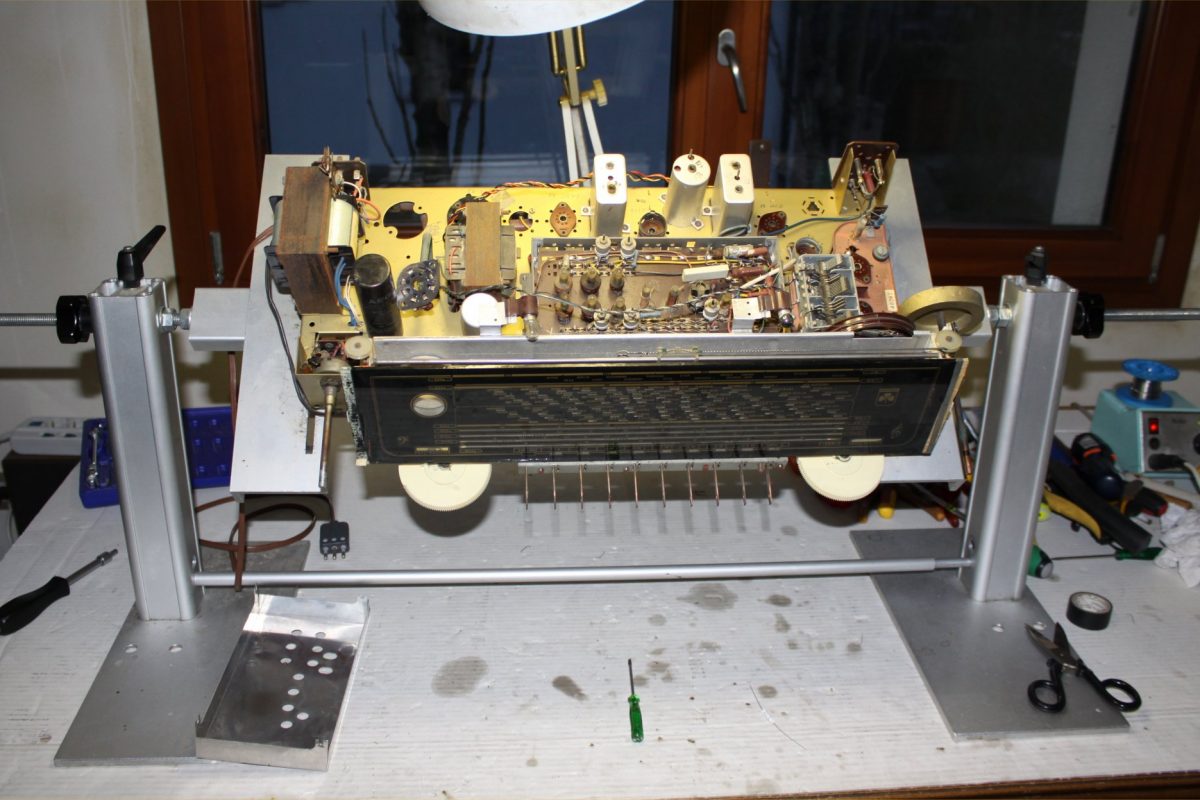



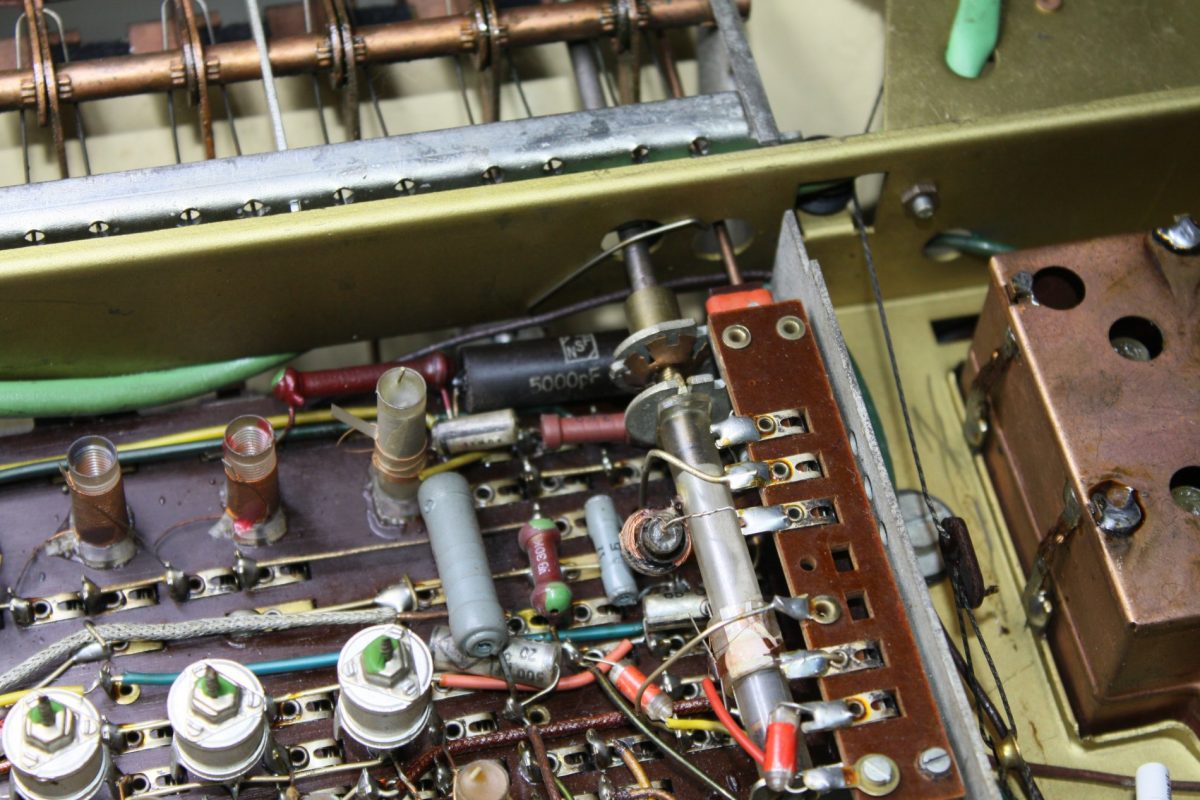 MW memory mechanism
MW memory mechanism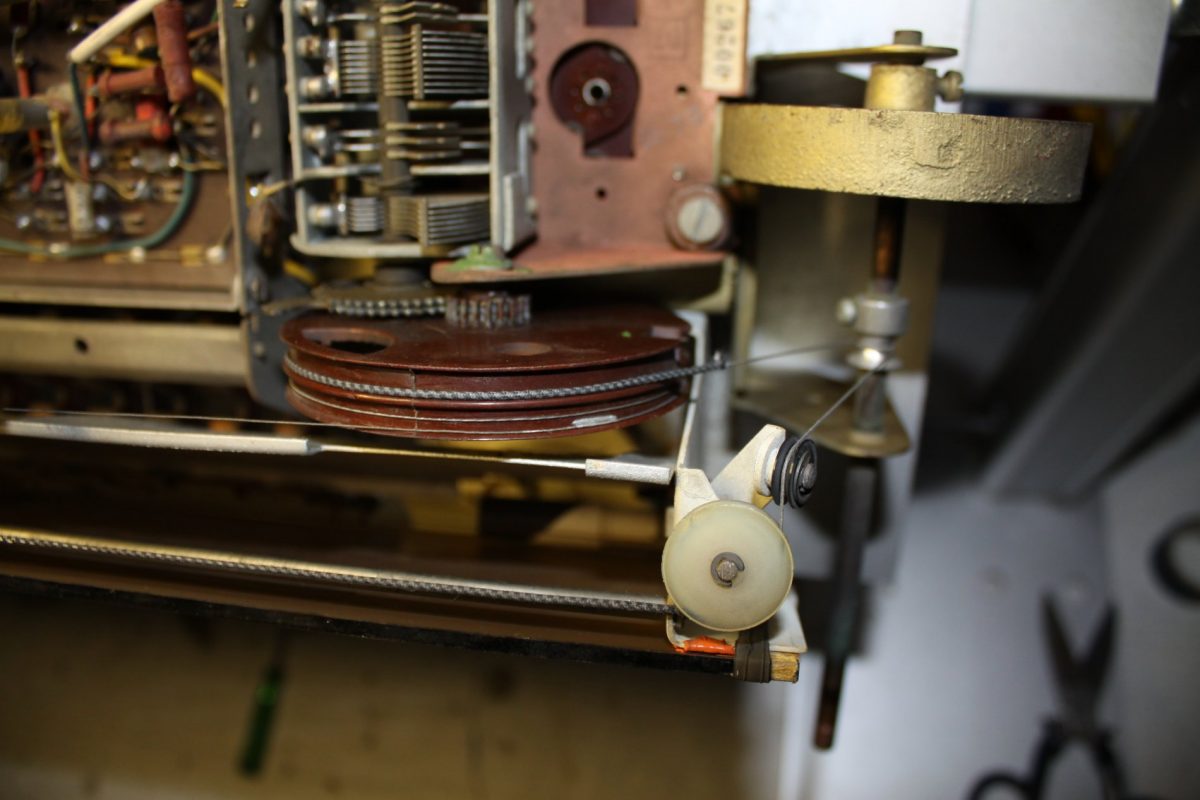
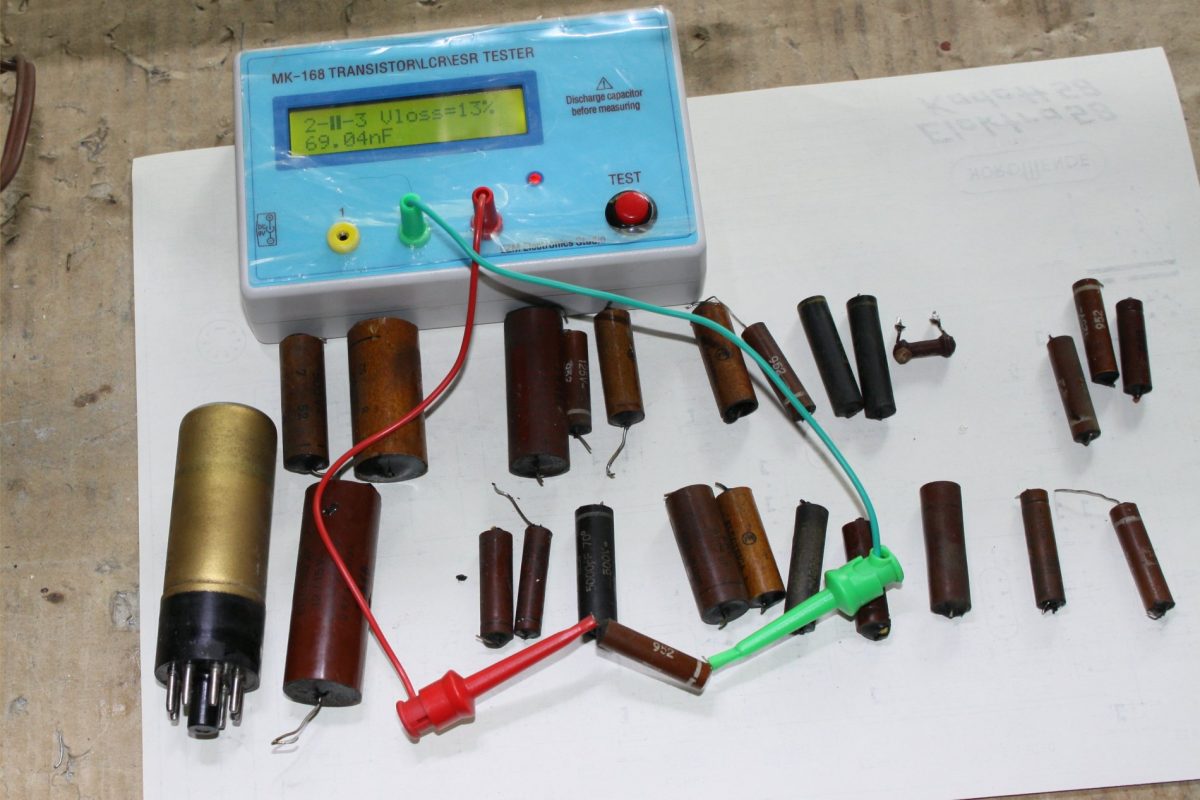 On the body is print 10 nF !!!
On the body is print 10 nF !!!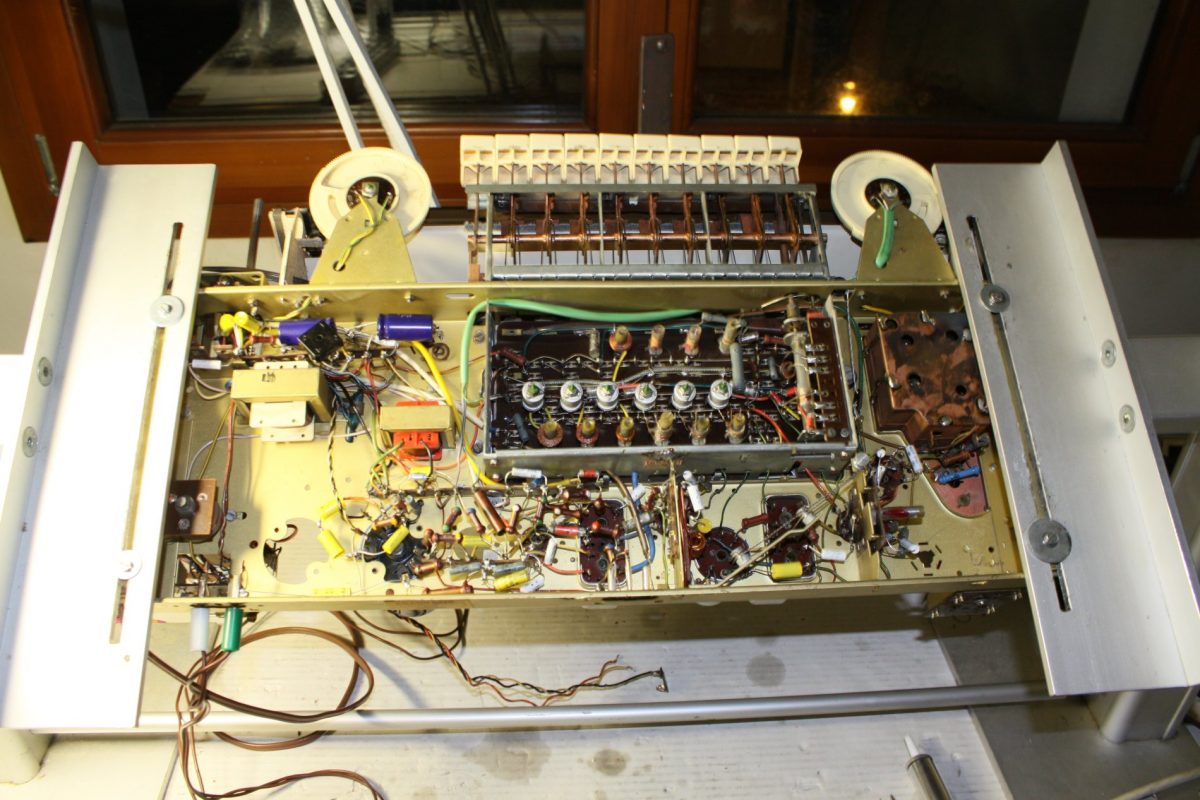
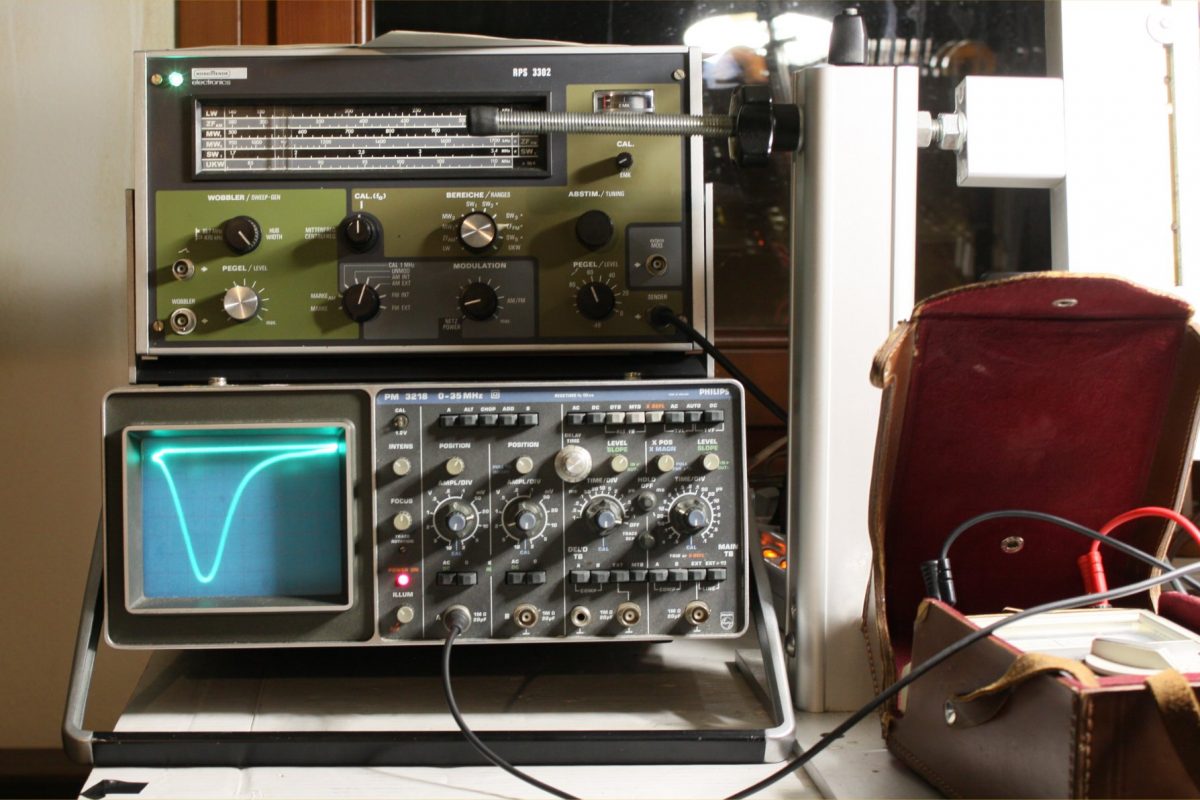 Medium Frequency tuning with sweep
Medium Frequency tuning with sweep Medium Frequency tuning with sweep and marker
Medium Frequency tuning with sweep and marker Detector stage tuning
Detector stage tuning
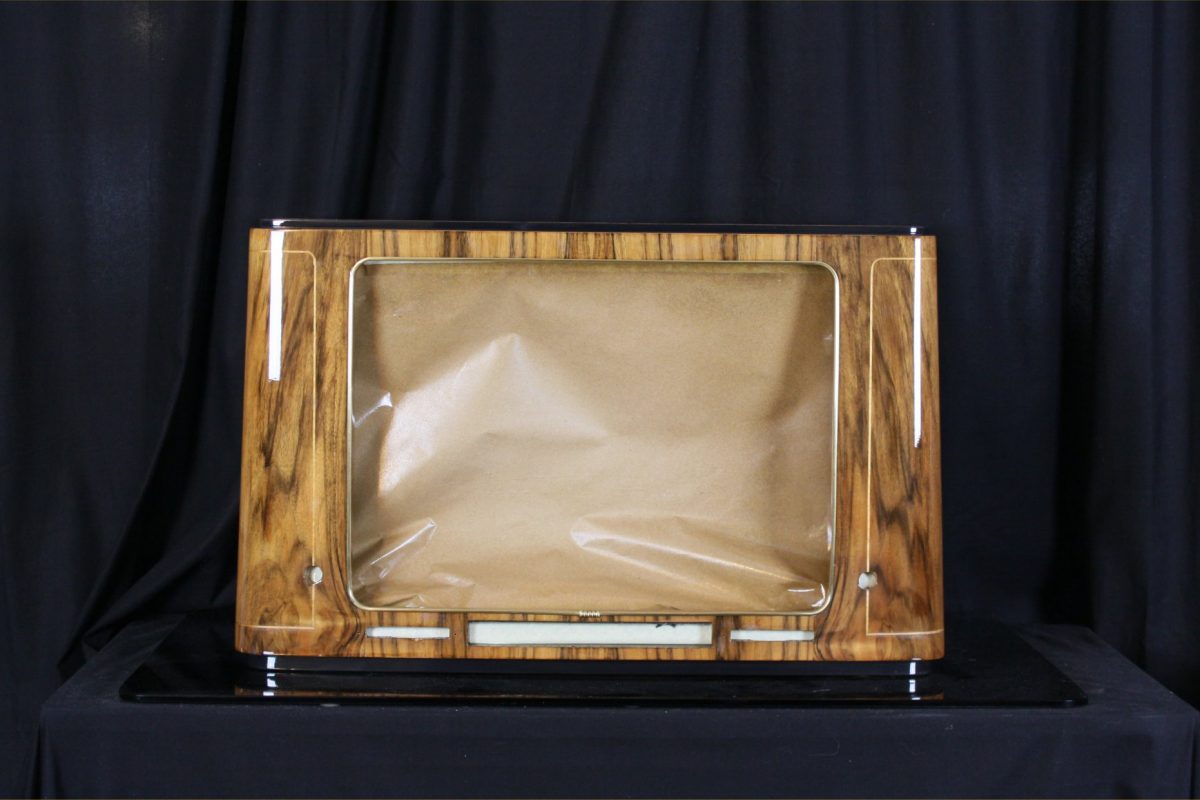
THE USUAL AMAZING LAST IMAGE






